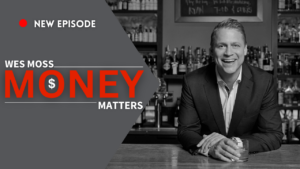Over my career as a financial advisor and radio show host I’ve talked with many people who are late into their 60s or even 70s and still working. So when I wrote my book, You Can Retire Sooner Than You Think, I felt the need to educate people about the possibility of retiring in their late 50s or early 60s. Ever since my book was published last spring, though, I’ve heard about more and more people trying to retire at the super early age of 50!
While that wasn’t originally what I meant with “retiring sooner than you think,” that doesn’t mean it’s impossible. Business owners, entrepreneurs and lottery winners might feel confident about this move, but for a hard working American with a more traditional 9 to 5 job it can sound more like a daydream than a reality.
Ultimately, it comes down to calculating exactly what you’ll need for retirement (don’t forget about inflation), and then looking at your savings to see if you can retire without Social Security or a pension since neither are typically available until at least age 62. An easy way to get started is by using this retirement calculator.
When evaluating if early retirement is financially feasible for you, remember that your assets need to produce some source of residual or perpetual income. I think of it in the following easy to remember acronym, RIDD.
If you want to get RIDD of your 9 to 5 job you should have Rent, Interest, Dividends and Distributions.
Let’s break this down.
When I say rent, I’m talking about someone paying you rent. Generally speaking, a $150,000 home should produce about $1,000 a month. If you own this home without a mortgage, then that money can go straight into your pocket.
Interest, Dividends and Distributions all feed into my method of income investing. For a quick refresh:
– Dividends from stocks
– Interest from various types of bonds
– Distributions from a variety of investments that don’t fit neatly into the stock or bond category
Depending on how you weight each category, an income producing portfolio should be able to produce an annual “cash flow” in the 4 to 5 percent range.
Based on my $1,000-Bucks-A-Month Rule, I typically recommend older retirees plan on a 5 percent withdrawal rate from their investments, but younger retirees in their 50s should plan on only withdrawing about 4 percent per year.
To put that into better perspective, if you have $1,000,000 in your investments in your 50s, you would be able to withdraw $40,000 a year in gross income at a 4 percent withdrawal rate. If you combine that with one or two rental properties that you own mortgage-free, you’re looking at an income of roughly $50,000 – $60,000 a year.
If you’re ready to move away from your 40-hour (or more) work week but maybe don’t have those extra rental properties, you might want to consider moving to part-time work. Whether you stay in the same field or completely switch things up, part-time income could allow you to step out of the rat race without having to draw on your nest egg until a later date.
When calculating what you’ll need in your early retirement be sure to include the cost of your medical insurance. You’ll need to cover that cost at least until you reach 65 and are eligible for likely lower cost of Medicare.
An additional perk to phasing into retirement is the possibility of being offered health insurance through your employer. While there are a lot of different rules and regulations around who does and does not have to offer health insurance, generally speaking if you start working for a company in 2016 with over 50 employees and work at least 30 hours a week then you should be offered health insurance.
Super early retirement is not an easy thing to achieve; however, it’s entirely possible for those who are determined and plan ahead. It’s important to start early with saving and invest in assets that will continue to pay you over time.
If you’re thinking about getting onto the path for early retirement, but you have trouble with putting together a detailed budget, just remember TSL. That’s Taxes, Savings and Life. If you put 30 percent of your gross income towards taxes, 20 percent towards savings, and then just live off of 50 percent, then you should increase your chances of a very early retirement.
Read the original article here.








